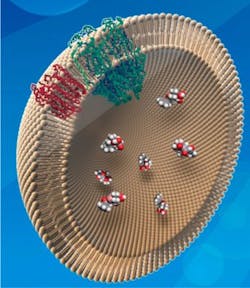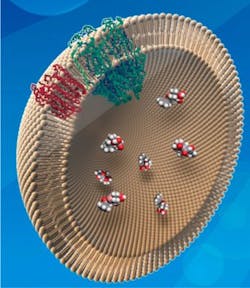| Credit: American Chemical Society |
May 1, 2013 -- Using the same mechanism that enables some bacteria to shrug off powerful antibiotics, scientists have developed solar-powered
nanofilters that remove antibiotics from the water in lakes and rivers twice as efficiently as the best existing
technology. Their report appears in American Chemical Society's journal
Nano Letters. David Wendell and Vikram Kapoor explain that antibiotics from toilets and other sources find their way into lakes and rivers, with traces appearing in 80 percent of
waterways. Those antibiotics foster emergence of new antibiotic-resistant bacteria, while harming beneficial microbes in ways that can degrade aquatic environments and food chains. Filters containing activated carbon can remove antibiotics from
effluent at municipal sewage treatment plants, before its release into waterways. But activated carbon is far from perfect. So the scientists looked for a better technology. They describe development and successful laboratory testing of capsule-like "vesicles" containing the very mechanism that enables bacteria to survive doses of antibiotics. This system pumps antibiotics out of bacterial cells before any damage can occur. Wendell and Kapoor turned it around, however, so that the system pumps antibiotics into the vesicles. That way, they can be collected and recycled or shipped for disposal. In addition to the pump, the vesicles contain a propulsion system driven by sunlight. The pump system could be adapted to clean hormones, heavy metals and other undesirable materials from water, the scientists state.
About the American Chemical Society
The American Chemical Society is a nonprofit organization chartered by the U.S. Congress. With more than 163,000 members, ACS is the world's largest scientific society and a global leader in providing access to chemistry-related research through its multiple databases, peer-reviewed journals and scientific conferences. Its main offices are in Washington, D.C. and Columbus, Ohio.
###




